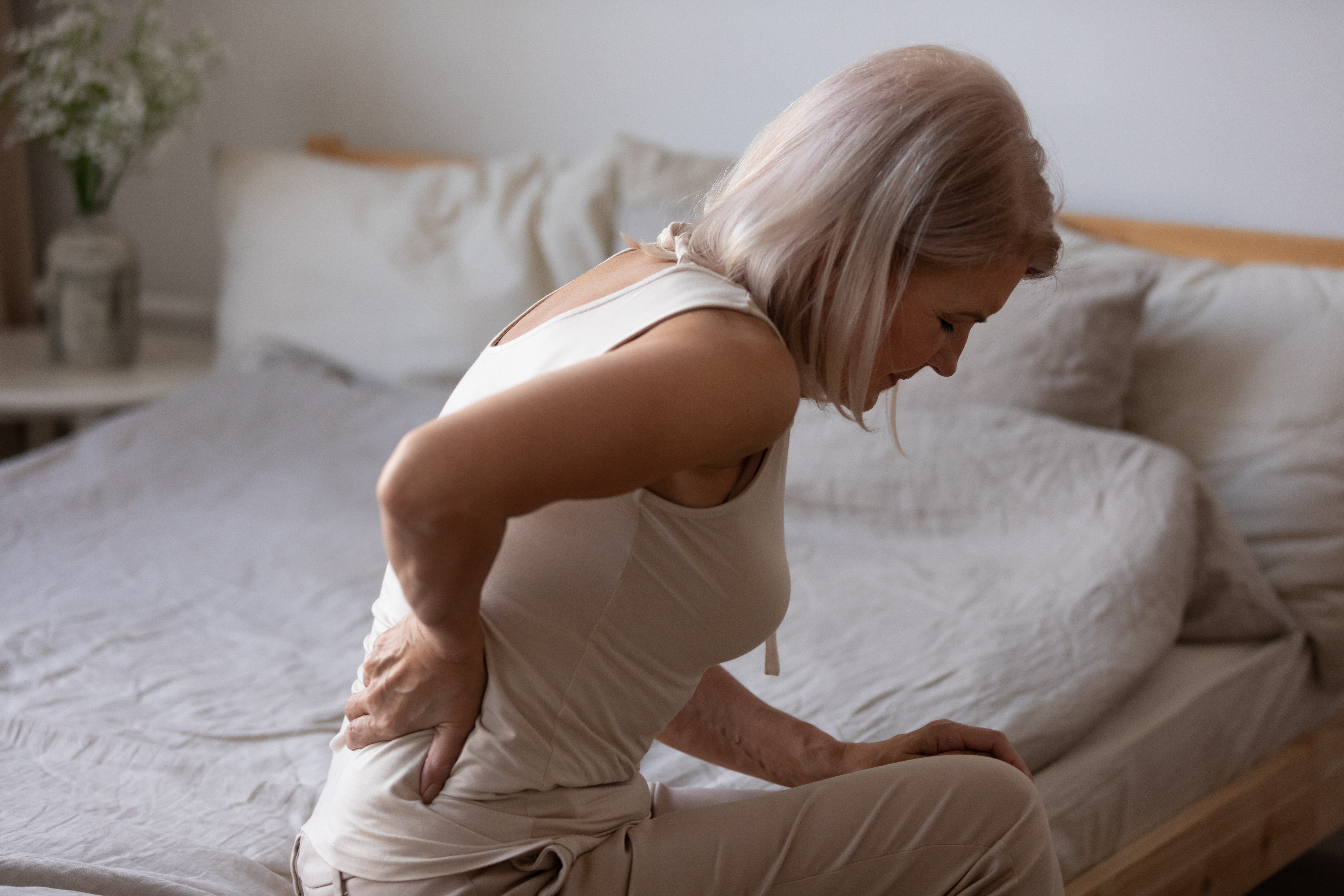Osteoporosis and bone health
16 September 2022

When you think about everything we ask of them, for most of us, our bones are pretty tough and they keep everything in the right spot pretty well, but as we get older, the trusty components of our skeletal framework can slowly lose their strength – becoming less dense and more fragile, and usually thanks to osteoporosis.
Osteoporosis (which translates to ‘porous bones’) is a condition that many of us have heard of, but often know little about. It’s most visible in elderly people with age-related kyphosis (hunched back), but osteoporosis is much more than simply a bent over frame when we get older. It’s a more complex condition that gradually weakens the bones, making them susceptible to cracks, fractures and breaking.
The problem is that, for the vast majority of people – and especially women post menopause – osteoporosis happens slowly, with few symptoms, and is only noticed when something goes wrong.
Causes
Bone is living tissue which is constantly regenerating itself, like the other cells in our bodies. Unfortunately, as we get older, the body’s ability to regenerate itself reduces, and bones are no different.
Age is a big factor, though even young people can suffer from osteoporosis. However, if you’re over 50 – and female – the chances are higher. There is also an increased risk of osteoporosis if:
- It runs in your family, or members of your family have broken bones from fairly minor incidents
- You don’t get enough calcium (from diet) and/or vitamin D (from sunlight)
- You smoke, drink a lot of alcohol, don’t have a healthy diet, or don’t do much exercise.
- You’re very thin or you’re overweight.
- You have or have had certain medical conditions including:
- Diabetes
- Coeliac disease
- Anorexia
- Rheumatoid arthritis
- Low hormone levels
- Thyroid condition
- Chronic liver or kidney disease
- You’ve undergone certain treatments for breast or prostate cancer, HIV, depression, or epilepsy, or you’ve used particular corticosteroids to treat asthma, or inflammation.
While these risk factors don’t necessarily cause osteoporosis directly, they can contribute to significantly increasing your risks.
Symptoms and risks
As mentioned before, people with osteoporosis often don’t know they have it until they unexpectedly fracture or break a bone from a relatively minor knock or fall. Even something as mild as coughing or sneezing can cause a fracture in weak bones.
The ones that seem to be particularly vulnerable to fractures from osteoporosis are in the spine, wrists and hips, though fractures – especially from a minor knock or fall – can also occur in the legs, ankles, arms or ribs.
These fractures, which could be from impact, or repeated stresses on the bones and joints (i.e. stress fractures), can then take a long time to heal, and may not even return to full strength, further increasing risk of future fractures. They can impair mobility, cause a lot of short and long-term pain, reduce your independence, affect your ability to do things you enjoy such as hobbies or exercise, and can even affect your mental wellbeing.
Preventing osteoporosis
You’re never too young or old to start doing things that will help prevent weakened bones. Of course, starting early is always better.
One of the most important things to do is to lower the risk factors if you can. Reducing smoking and alcohol consumption is an important start if they are part of your life. Eat a healthy diet with lots of vitamins and calcium-rich foods (dairy, leafy green vegetables, tinned salmon or sardines, soy products and almonds). And exercise – even just 30 minutes a day of activity can help.
Exercises such as strength-training, brisk walking, climbing stairs and even dancing can help strengthen bones, while balance exercises can reduce the risk of falling which puts bones in danger. Both types of exercises are important, especially as we get older, and getting advice from your GP or physio can put you on the right track, safely.
Diagnosing and treating bone weakness
A regular bone density check arranged by your GP or through Burnside Hospital is a kind of x-ray that checks how ‘solid’ your bones are. If their density is low, then chances are, you have or are at risk of developing osteoporosis.
Prevention is always better than treatment, but it’s never too late to try and slow it down. Again, positive changes in diet, exercise and lifestyle will help, but your doctor may also suggest calcium and/or vitamin supplements.
At Burnside Hospital, we have the utmost care for our community, and encourage those to take measurable steps to prevent an osteoporosis diagnosis. For more information about osteoporosis have a chat with your GP.


